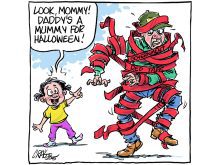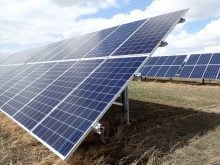Ted Jackson and I are both photojournalists. We began our careers about the same time, 25 years ago. He chose New Orleans and I chose Detroit – both cities that are highly visual and emotional front lines on the human condition.
Next to firefighters and police, photojournalists working in large cities are accustomed to being first responders.
Working in these environments early in our careers, we quickly became adept at going into situations that forced us to function on emotional autopilot.
I once had to take photos amid the chaos and debris of a plane crash where nearly 200 people died instantly. At risk of dying from drowning or mob violence, Jackson had to photograph the destructive force of hurricane winds during Katrina.
Read Also

Farmer ownership cannot be seen as a guarantee for success
It’s a powerful movement when people band together to form co-ops and credit unions, but member ownership is no guarantee of success.
The more you do it, the more accustomed you become and therein lies the danger. The photographer can sometimes normalize these situations, using the camera lens as a shock absorber between himself and the event. I’ve caught myself laughing or crying while shooting photos. At other times the emotion of the event does not register until much later.
There was nothing “normalized” about Katrina for Jackson.
It was inspiring to hear him speak recently about his experiences and insights during Hurricane Katrina as the keynote speaker of the American Agricultural Editors Association convention held in New Orleans in July.
To this day, Jackson says he struggles to explain why Katrina was so different from everything else he’s covered in his career. It was somehow more personal.
He likened it to hearing about a car accident and racing to the scene, only to find the first responders pulling one’s own son out of the car.
“That’s the best way that I can explain what Katrina was like to me. It was impossible to remain a distant observer while I photographed. I had a strongly felt need to connect with those that I was photographing. As a photojournalist I’m accustomed to being a first responder, but as people fought for their lives amid the swirling flood waters I found myself in many cases the only responder.”
I’ve not yet been in a situation where I had to decide either to keep shooting or put my cameras down to help save someone’s life. During Hurricane Katrina, Ted was forced to cross that bridge. He threw down his cameras to help lift an elderly woman with a broken hip to safer ground.
He is both a journalist and a hero.
Editor’s note: DeKay won the photographer of the year award at the AAEA convention.
———
access=subscriber section=opinion, none, none















